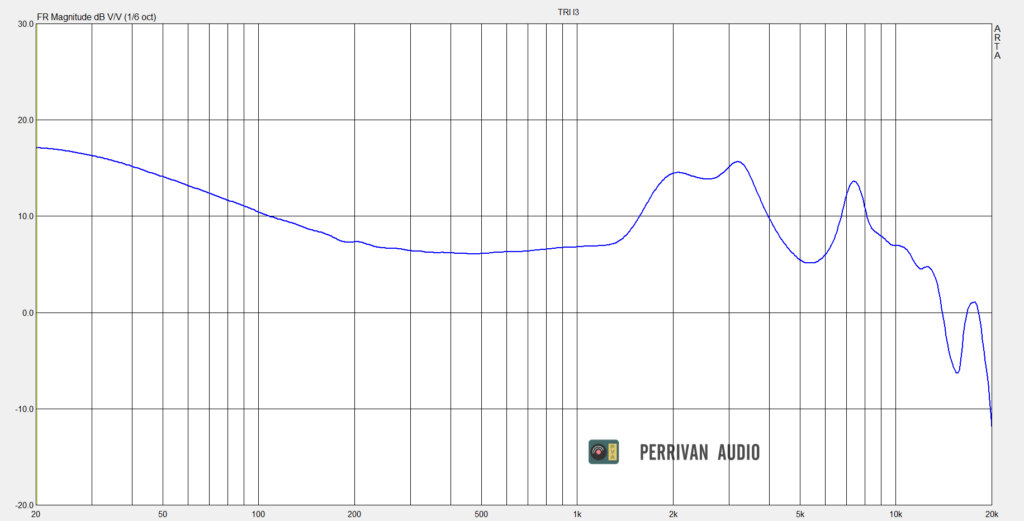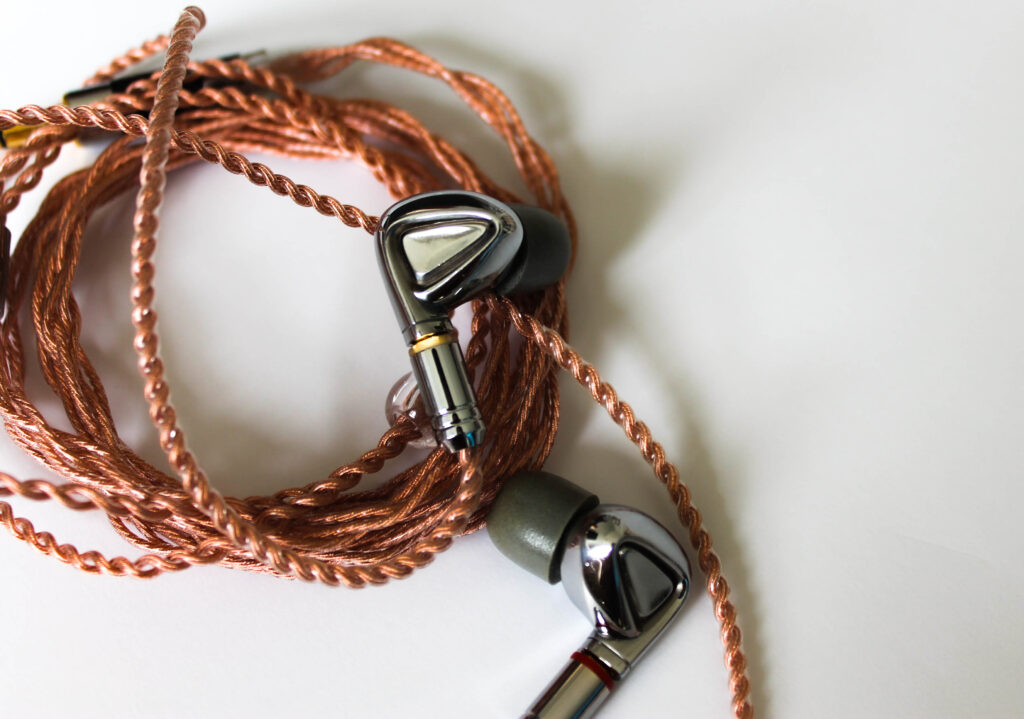Updated: Dec 29, 2020
Pros: Subbass extension and bass slam (Bass lovers rejoice!), Energetic sound signature with good layering, Not too hard to drive for a planar, Build Quality
Cons: Very source and amp dependent (getting it at the right power-volume), Fit, Bass was a little too… powerful (personal preference)
Driver Setup: 1 Dynamic Driver + 1 Planar Magnetic Driver + 1 Balanced Armature
Price: $150 (USD)
Intro
Disclaimer: This review set is a demo set graciously lent to me by a friend from his personal collection. This review is written of my own accord and all thoughts here are my own. Should you find yourself interested in getting yourself a pair, you can get it online here.
This is a review for the TRI I3 IEM, a triple driver earphone. It has a dynamic driver, planar magnetic driver and lastly a balanced armature driver. This is probably one of the cheapest pair of tribrid earphones around. Without further ado, let’s dive right into the review.
Accessories and Build Quality (Score: 7.5/10)

The TRI I3 comes in an understated black box, with a felt pouch and the two polished IEMs grabbing your attention the moment you open the box. Nothing too fancy and minimal but functional accessories.
The build quality is rather impressive, with an all-metal build and seem to be chrome-plated or polished, similar to the Moondrop KXXS. The large surfaces of shiny silver are unsurprisingly fingerprint and scratch magnets.
The included cable is a twisted 4-core copper cable which looks quite good when paired with the IEMs.

Fit (Score: 6/10)

I struggled with the fit of the TRI I3. This is one of the largest IEMs I have tried and the nozzle was really wide as well. I had trouble finding third-party tips that would fit the earphones and my ear comfortably. The IEMs have significant weight to them too and this weight is apparent when worn. These do manage to stay in the ear when I sit stationary so it’s still passable as long as these don’t fall out while listening.
Sound (Score: 8.0/10)

Frequency Response of the TRI I3
Sources Used
- Hiby R5
- Lotoo Paw S1
Albums and Tracks tested with
- Michel Buble – To Be Loved
- Dvorak New World Symphony – Berliner Philharmoniker
- Ragtime broadway Recording
- The Vamps Night & Day (Day Edition)
- Mama Mia Movie Soundtrack
- Sheppard – Animals
- Foster The People Houdini, Next to Me
Bass (Score: 8.5/10)
Trying these IEMs for the first time, the sub-bass really rumbles. The bass has a lot of quantity and there is an apparent sub-bass emphasis. This helps to create a strong yet defined low end without much bloat. The bass has good separation and texture, especially in songs like Foster the People’s “Sit Next to Me”. Bass lovers would definitely be impressed with the quantity and quality of the bass here. People who complained about the TinHiFi P1s lacking in the bass department would certainly be satisfied with the performance on these.
The best thing about the bass is the way it doesn’t overshadow the mids or try to steal the stage for itself. A special mention is that snare drums had a nice timbre and impact on the I3s. The bass performance also does improve with decent amplification.
Mids (Score: 8/10)
Lower mids have a good texture, carried over from the bass. Male vocals are a little thrown back and unnaturally softer than the female vocals. However, they are still well-defined and have enough warmth to them. Female vocals manage to remain silky smooth with very nice clarity and tonality.
Upper mids are definitely more pronounced as can be seen from the frequency response. However, it can thin out at times. This is more apparent in trumpet instrumentals, where they can be a little piercing at times.
The TRI I3s aren’t the best at detail retrieval and are a more musical IEM. On more crowded tracks, the I3 sometimes shows signs of struggle as the sound a little crowded and messy at times.
Treble (Score: 8/10)
Treble is very safe on the TRI I3. It deftly avoids most sibilance. However, the lower treble peaks can be fatiguing when listening at higher volumes for longer durations. Other than that, the TRI I3 demonstrates good upward extension without excessive splashiness and plays a good complementary role to the mids. The treble doesn’t have the best detail but is sufficient and sits safely in the “good enough for its price” category of technicalities.
Overall
The soundstage is not especially wide but above average. Imaging is pretty well done and enjoyable overall.
Turning the volume up too much kind of ruins the sound, especially on more powerful sources like the Hiby R5. There is a certain threshold on the TRI I3 where the sound signature transitions from pleasing into aggressively forward and messy. The I3s sounded decent straight from my phone, which was surprising, so users who intend to power it without an audio player or DAC would be delighted with this. This wouldn’t have been possible with power-hungry IEMs like the TinHiFi P1. That said, amplification still has a significant impact on the sound.
The I3 is extremely source dependent in the sense that areas like the bass and lower mids certainly benefit from a higher power, however, listening to them at higher volumes would be rather overwhelming. It seems to unlock a different “mode” with the upper mids and lower treble getting shouty and overly “in your face”. I especially liked the pairing with the Lotoo Paw S1 DAC, giving it a more organic sound while providing it with sufficient power.
Comparison
TinHiFi P1

Full review of the TinHiFi P1
The TinHiFi P1 is a single planar driver IEM released quite a while back. Right of the bat, it is immediately clear where what is missing on the P1 that the I3 has an abundance of – the bass. To me, the bass on the P1 is not anaemic but quite enough to keep the music enjoyable, especially when properly amped. However, the sub-bass extension on the P1 comes nowhere close to that of the I3. The P1 rolls off really earlier and lacks that bottom end support.
However, the overall tonality and tuning of the P1 are much more laid back, coherent and relaxing than the I3. I enjoy the overall tuning on the P1 more.
Fit isn’t great from the P1 either, but its smaller size makes it more manageable and with foam tips, the seal is pretty good. With the foam tips, the treble is also tamed quite a bit on the P1 and I didn’t find it tiring.
Conclusion

TRI knew what they wanted to achieve by designing this TRI-brid (haha), using each of the three different drivers to their strengths, with a dynamic driver and a balanced armature to complement the weaknesses of a typical planar driver. The subwoofer performance dynamic driver clearly establishes its presence, something bass lovers would love.
To be perfectly honest, the TRI I3 isn’t going to be the best thing ever or even the best planar performance, but considering how difficult it is to execute a successful implementation of a tribrid, TRI does an amazing job at creating a coherent tuning that many would enjoy at such an affordable price. It still has its flaws, such as its detail retrieval and tonal balance is occasionally off, and the presentation of sound can get messy at times. However, it would be unreasonable to expect the world out of such an innovative release at such a price point and the I3 already presents decent value. The biggest issue for me remains to be the fit and comfort of these and the size of my ears makes it hard for me to comfortably enjoy these.
Last but not least, I have heard from retailers that the I3 needs to be properly cared for and stored with a desiccant so if you’re reading this as a current or potential owner, do take note!
Click HERE for our grading list for earphones
